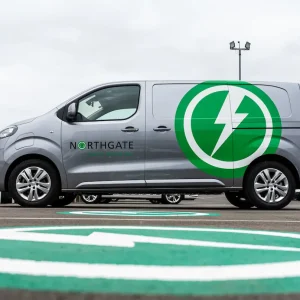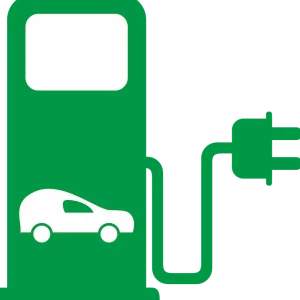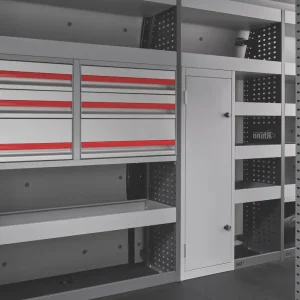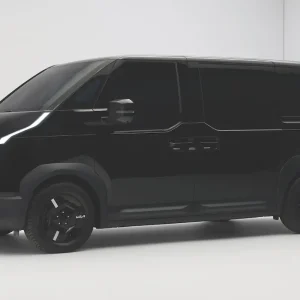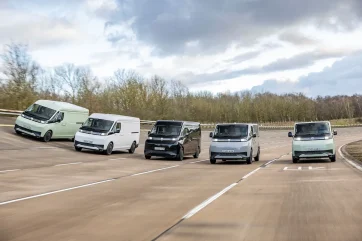
European light commercial manufacturers are facing yet another challenge from the Chinese with the arrival of the electric Farizon SV 3.5-tonner. Farizon is the van, truck and bus division of automotive giant Geely, which owns the LEVC van and taxi factory in Coventry along with carmakers Volvo, Polestar and Lotus.
With load area volumes from 6.9m3 to 13m3, the front-wheel-drive newcomer is produced with three different lengths and three different heights. The smallest model is a tad roomier than the biggest Peugeot e-Expert while the largest derivative is about the size of the mid-range Peugeot e-Boxer.
Payload capacities range from 1.1 to 1.3 tonnes with a loading height of just over 500mm. Maximum towing capacity is 2.0 tonnes.
With a WLTP combined range of from 205 to 225 miles, and up to 342 miles claimed for the urban cycle, the Farizon SV is initially up for grabs with the choice of either a 67kWh or an 83kWh battery. A 106kWh battery is in the pipeline.
Drag coefficient is a modest 0.29, which should help reduce energy consumption.
The batteries are warrantied for eight years/120,000 miles, with a four-year/120,000-mile warranty covering the rest of the vehicle.
Farizon has opted for cell-to-pack battery technology, which integrates the cells directly into the battery pack without dividing them into modules. Advantages, say the manufacturer, include a 10% increase in capacity, a 4% decrease in weight and a 20% improvement in body rigidity.
Apparently designed with European buyers in mind, but already on sale in China, the Farizon SV (the initials stand for Super Van) has been developed from the ground up purely as an electric model using the manufacturer’s GXAM platform. It features drive-by-wire technology, which does away with mechanical connections and is said to increase the van’s range by 5% and cut its stopping distance by 10%.
Steering response is said to be three times faster than the response delivered by a conventional system. Opting for drive-by-wire and making use of high-strength steel and aluminium has made the van 8% lighter than it would otherwise be, Farizon claims.
Handy features include the removal of the nearside B-pillar which creates a huge opening between the passenger door and the sliding cargo area door if the passenger seat is removed. It spells far easier loading (but makes installing a full-height, full-width, steel bulkhead a challenge) and is something no other van maker has managed to provide on a right-hand-drive model. It is however found on some left-hand-drive vans marketed on the other side of the Channel.
Chief designer Herve Bertrand says Farizon has patented a triangular bulkhead design, which includes a B-pillar located in the passenger door to provide strength and protection to the interior.
In an endorsement of its safety credentials, the SV has been awarded the highest-possible Platinum safety rating by Euro NCAP.
In the cabin the dashboard is dominated by a 12.3in touchscreen and physical buttons have been retained for many of the key functions to minimise driver distraction.
The SV will be sold in Britain by global car and light commercial distributor Jameel Motors and represents the importer’s first foray into the UK – brands it represents around the world include Toyota, BYD and MG.
The UK is the first European market to receive the Farizon SV and Jameel will be selling it from a wholly-owned flagship dealership in London. It is planning to recruit up to 40 franchised sales points to provide coverage across the country and says it is looking for van dealers offering extended opening times.
Jamaal has also enlisted the AA to deliver service, maintenance and repair support, using a team of mobile technicians with electric vehicle expertise.
The Farizon SV is set to go on sale on 1 May with prices, excluding VAT, ranging from £45,000 for the L1H1 version to £56,000 for the L3H3. Just one trim level will be offered.
Designer Bertrand says Farizon is working on a chassis van for 2026 that it could bring to market as a tipper. He stressed, however, that it is not enough to “occupy the market” and that sufficient demand must be identified prior to launching the model.
Over one million miles of testing was carried out in the build-up to the SV’s launch, says Jameel, with more than 100 crash test protocols completed.

